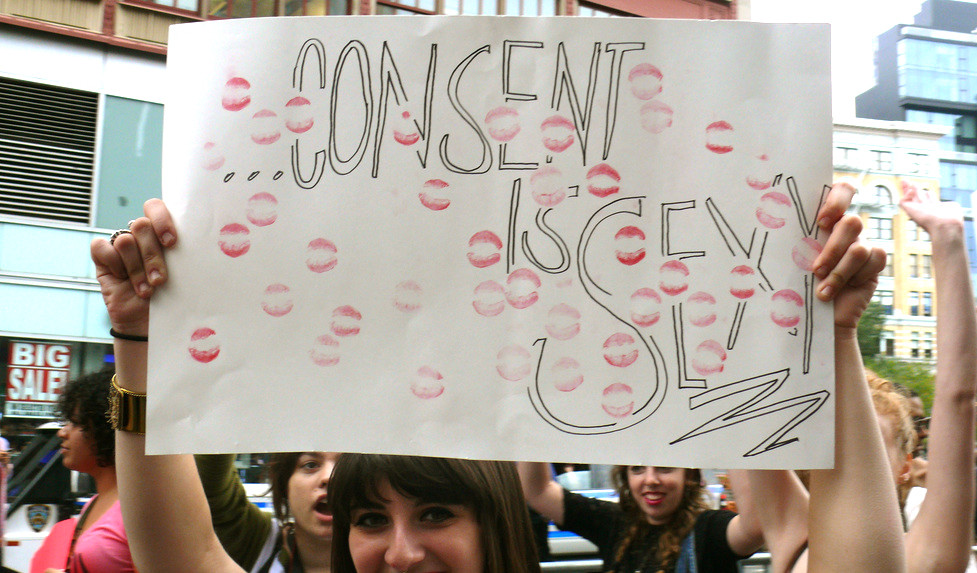Sexual education in America is far from perfect. It varies widely from state to state (and even school to school), but at worst it can shame rape victims, spread misinformation, and exclude everyone who isn’t cisgender and heterosexual. Given the pitfalls, you might wonder…
Why do we teach sex ed in the first place?
Well, for one thing, sometimes we don’t. Only 22 states have required sex education in their public schools, and only nineteen of those states require that the curricula are “medically, factually, or technically accurate.” (I kind of want to know what goes on in those other three states.) But when we do, it’s usually presented to parents and school boards as a way to prevent the adverse effects of adolescent sexuality.
That’s probably part of why abstinence has become such a focal point in many schools’ curricula, along with a series of Bush-administration initiatives that provide federal funding to abstinence-focused programs. When your goal is to prevent teen pregnancy, persuading teenagers not to have sex seems like a good way to make that happen (although whether such a thing is actually possible or effective is another story).
Similarly, STIs could be totally contained if nobody ever engaged in any sexual activity with anyone else, ever. If your only objectives are preventing teen pregnancy and STIs, teaching abstinence does seem like a foolproof way to avoid those things.

But the current focus on those two social ills — unplanned pregnancy and STIs — completely ignores another, equally pressing problem: rape. And given America’s increasingly obvious problem with what constitutes rape, policymakers should really be taking it into consideration.
One of the most important elements of being a sexually mature adult is understanding consent: how to ask for it, how to give it, and how to understand when it is and isn’t valid. And right now, most sex-ed programs in America don’t teach that at all. Sure, they might include a lecture here and there on how “no means no,” and if you say no to somebody, they should stop. (That’s a good start. Boundaries are important.)
But the bulk of consent isn’t about saying “no.” A lot of it is in learning to respectfully take “no” for an answer. And a lot of consent is about learning when and how to say “yes.”
The current obsession with abstinence almost prohibits our schools from teaching those lessons. You can’t teach someone to navigate their own boundaries while simultaneously telling them where their boundaries should be. You can’t teach someone to consent to sex that they actively desire, while at the same time telling them that they shouldn’t desire sex at all. It’s hard to believe that “no means no” — that is, “no” is the final answer — when you’ve also been taught that everyone should say no, all the time, no matter what they actually want to do.
American teenagers leave these abstinence-focused programs having been told that everyone should resist sex all the time. And of course, they’re released into a media environment that expects them to be having as much sex as possible. No wonder they’re confused about consent. And, perhaps as a result, we hear story after shocking story about high school boys violating, harassing, and abusing their own classmates.
So what should schools teach instead?
- First of all, here’s the human body. Here’s a diagram that looks like the Texas Longhorns. Learn how to label the vas deferens! Maybe someday this information will be useful.
- Your sexual choices are yours. No matter whom you’re attracted to, how much you want to do with them, or what kind of relationships you want to have, you are not wrong for wanting those things.
- You get to decide where your boundaries are. You should expect other people to respect those boundaries. You have the absolute final word on your sexual decisions.
- Other people’s boundaries are equally important. Violating someone else’s physical boundaries is never okay.
- The only way you can be sure that someone wants to have sex (or do anything sexual) is to ask. If they say yes, then go right ahead. If they say no, you should assume that’s their final answer, although you can ask them to keep you posted if they change their mind. If they’re blackout drunk, be a decent person and get them a glass of water.
- Sex does have consequences. STIs are bad, and most high school students aren’t trying to get pregnant. Luckily, there are ways to prevent the spread of STIs, and there are ways to prevent unwanted pregnancy. They are usually effective if used correctly, so you should learn to use them correctly.
- Sex can also have emotional and social consequences. You should consider them when you’re making decisions. But everybody is different, and everybody experiences sexuality in different ways.
- Abstinence works too. If you decide you don’t want to have sex, that’s great. Like any other sexual decision, it’s totally yours to make.

Where did you find these resources?
Feel every woman as your mother and practice more than 1000 times everyday.Take a promise from your mother, I will not have a sex untill your mother allows you for legal sex. If you are married you should not leave your spouse untill your death.Heterosexuality is legal, ban all others.
Yeah, or not!